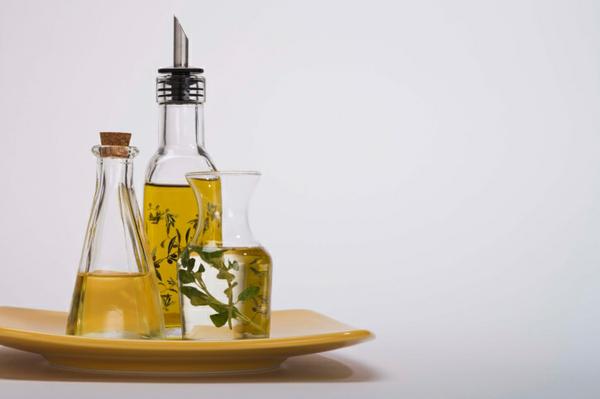Heart Disease and Trans Fats – Are you among the 20%?
A study published in the Journal of the American Dietetic Association found that most American’s know they need to avoid trans fats, but only 20% actually knew which foods contained trans fats.
Trans fat is a processed fat, produced as a by-product when hydrogen is added to make a substance more solid at room temperature. For example, margarine is hydrogenated vegetable oil – hydrogen was added and the by-product trans fat is produced. Although, it should be noted that many margarine’s have changed production procedures so the trans fatty acid by-product is not produced. Trans fats are just as bad for heart health (if not worse) than saturated fats. Trans fat increased LDL (bad) cholesterol levels and lowers HDL (good) cholesterol.
Trans fats, also known as hydrogenated oils, are artificially produced in the laboratory by adding extra hydrogen atoms to unsaturated vegetable oils. They have long been a favorite of the food industry for their increased shelf life over conventional oils. Unlike natural fats, however, trans fats have no nutritional value and drastically increase the risk of cardiovascular disease and death. Like saturated fats, they increase the body’s levels of LDL (“bad”) cholesterol, but unlike those fats they also lower its levels of HDL (“good”) cholesterol.
Many processed foods contain trans fat, such as baked and fried foods, so read the food labels. As of January 2006, most manufacturers are required to list trans fatty acid content on the food label. Also, check the ingredient list for the words “hydrogenated” or “partially hydrogenated” as a sign that the product contains trans fat.
All the best,
Lisa Nelson RD
Be Heart Healthy and Lose Weight
How to Lower Triglycerides for a Lower Total Cholesterol

I’ve recently answered several questions related to triglycerides. These questions range from “What are triglycerides?” to “My triglycerides are 400, do I need to worry?” on to “Help, my triglycerides are 1200, how do I fix this?”
So, I’m going to answer all these questions here for those of you who are wondering, but haven’t asked.
What are triglycerides?
Triglycerides are a type of fat. Actually, they’re the most common type of fat in foods and in your body. When you eat foods containing fat and oil, such as butter, French fries, and chocolate chip cookies, the body takes the fat and stores it in your body as triglycerides. So, all those “fat cells” in your body are made up of triglycerides.
What do triglycerides have to do with cholesterol?
When you see your MD, he or she may order a “lipid panel” (lipid is a fancy term for fat). From the lipid panel you will learn your total cholesterol, HDL (good) cholesterol, LDL (bad) cholesterol, and triglycerides.
Total cholesterol = HDL + LDL + VLDL
Well, what in the world is VLDL? Not something you’ve probably seen or heard of before. VLDL is an acronym for Very Low Density Lipoproteins, another “bad” type of cholesterol. Triglycerides are used to calculate VLDL levels in your blood.
Triglycerides x 20% = VLDL (bad) cholesterol
Also, the liver uses triglycerides as fuel for cholesterol production. So, if you eat a high fat (triglyceride) diet, the liver will increase its’ production of cholesterol and put more cholesterol out into your blood.
What is a normal triglyceride level?
You want your triglycerides to be below 200 mg/dL. Borderline high triglycerides are from 200-500 mg/dL. Triglycerides are high risk above 500 mg/dL.
Some experts argue that 200 mg/dL is too high and that a normal level should be less than 150 mg/dL. The numbers I’ve listed above are the current guidelines from the National Cholesterol Education Program Expert’s Panel.
If your triglycerides are high your heart disease risk increases.
What you can do when lowering triglycerides?
1. Limit simple sugars.
Unlike other types of cholesterol, triglycerides are affected by sugars you eat. You need to limit foods such as soft drinks, candy, baked goods, syrup, table sugar, jelly, and honey. A high intake of fruit juice can also raise triglyceride levels since juice contains a high content of natural sugars.
2. Limit alcohol.
If your triglycerides are borderline high or high risk, discuss your alcohol intake with your MD. My recommendation for borderline high (200-500 mg/dL) is to limit alcohol to no more than 1 drink per day for women, 2 drinks per day for men. One drink equals 12 ounces beer, 4 oz wine, or 1 ½ ounces liquor. If your triglyceride level is high risk (great than 500 mg/dL) I recommend NO alcohol. Again, discuss your situation with your MD.
3. Lose weight and/or maintain a healthy weight.
Many times weight loss alone will lower your triglycerides. Losing as little as 10% body weight could drop your triglycerides back to the normal range.
4. Choose a low-fat diet.
To achieve lower triglyceride levels, maintain a dietary intake of 30% or less of total calories coming from fat. A healthy diet for normal triglyceride levels should consist of whole grains, beans, fruits, vegetables, low-fat dairy, and lean meat.
5. Increase your physical activity.
Boosting your activity can lower your triglycerides up to 40%. If you’re not currently active, talk to your MD before starting an activity program. To reduce triglycerides, be physically active at least 30 minutes on 3 or more days each week. The more activity the better.
Triglycerides aren’t all bad. They provide efficient energy storage, cushion your organs, transport certain vitamins, and keep you warm by providing insulation. What’s important is to keep them under control!
All the best,
Lisa Nelson RD
 |
Heart Health Made Easy: Master the Basics to Lower Blood Pressure and Cholesterol for a Longer, Healthier Life
|
Heart Health and Weight Loss – How much fat do you need?

I want to talk about the fat in your diet. When it comes time to lose weight one of the first steps is to switch to a low fat diet. I want to caution you not to drop your fat intake too low. Yes, you need to watch the fat calories, but some fat is needed everyday for optimal health.
Fat is an essential component of a healthy diet providing energy and the fat soluble vitamins A, D, E, and K. Some types of fat even reduce your risk for certain chronic diseases, such as heart disease.
What’s important is the amount and type of fat. I recommend restricting fat intake to ~30% of your total daily calories. This would mean if you are consuming 1500 calories per day, 450 calories or 50 grams would come from fat sources.
Now, you need to make sure these fat sources are healthy. Here are examples of healthy fat sources to include in your diet in moderation:
Olive oil
Avocados
Seeds
Nuts
Peanut butter
Fish
Some fat in your diet actually promotes weight loss by helping you feel full longer, decreasing your likelihood to snack too much and overeat!
February is American Heart Month. In recognition of American Heart Month you can access Heart Health Made Easy at a 25% savings. Learn more about this take action guide to lower cholesterol and blood pressure at http://www.hearthealthmadeeasy.com.
All the best,
Lisa Nelson RD
Be Heart Healthy and Lose Weight
Lower Cholesterol – Understand Fatty Acids
Unless you have been living under a rock, you have probably heard the term fatty acids. But, do you understand what they are and how the right ratio will improve your heart health? I intend to clear up the confusion.
Types of Fatty Acids
There are numerous types of fatty acids. I am focusing on omega 3 and omega 6.
Unsaturated Fats
Omega 3 and omega 6 fatty acids are both unsaturated fats. To improve cholesterol levels, you want to replace the saturated fats (i.e. lard, shortening, ice cream, cheese) in your diet with unsaturated fats.
What does "omega" mean?
Most of you are familiar with the saying "alpha to omega", in other words, beginning to end. The "omega" indicates which carbon has the first double bond on the carbon chain when you start counting from the omega end. For omega 3, the first double bond is on the third carbon from the omega end of the carbon chain. I know you were wanting to review a little biochemistry today!
Essential Fatty Acids
Omega 3 and omega 6 fatty acids are also essential fatty acids.
Essential fatty acids are necessary for cardiovascular health, but our body cannot synthesize them. You can only obtain essential fatty acids through the foods you eat.
Omega 3 (Linolenic Acid)
To keep things simple, I am going to use the acronyms ALA, EPA, and DHA. These are all types of omega 3 fatty acids. If we consume a food containing the omega 3 fatty acid ALA, our body will convert it to EPA and DHA. Studies have shown a link between EPA, DHA, and heart disease. More studies are needed to understand ALA’s relationship.
Sources:
Oils – Canola oil, Soybean oil, Flaxseed oil (good source of ALA)
Seeds and nuts – flaxseeds, walnuts, pumpkin seeds, Brazil nuts, sesame seeds <
Vegetables – avocados, some dark leafy green vegetables (kale, spinach, mustard greens, collards)
Fish (good source of EPA and DHA) – salmon, mackerel, sardines, anchovies, albacore tuna, lake trout, herring
Omega 6 (Linoleic Acid)
I am going to throw in more acronym’s – GLA and AA – omega 6 fatty acids. Linoleic acid is converted to GLA and on into AA by the body. Researchers are finding indications of a link between GLA and EPA, in relation to heart health and reduced blood pressure. High intake of sugars, alcohol, trans fats, and various other factors can inhibit the conversion from linoleic acid to GLA.
Sources:
Oils – Sunflower oil, corn oil, safflower oil, soybean oil, cottonseed oil, flaxseed oil
Seeds and nuts – flaxseeds, pumpkin seeds, pistachio nuts, sunflower seeds, pine nuts
Meat – chicken, beef
For optimum heart health, the ratio between omega 6 fatty acids and omega 3 should be between 1:1 and 4:1. A practical example of what a 1:1 ratio means, for every 3 ounces of beef you eat, you would need to eat 3 ounces of tuna (I do not mean in the same meal!). The ratio for the typical American diet is 11:1 to 30:1. This poor ratio is linked with heart disease, among several other health issues.
Bottom Line:
For heart health, increase your intake of foods containing omega-3 fatty acids, while cutting back on omega-6 fatty acid sources. For example, switch from corn oil to canola oil, increase the number of meals you eat that contain fish each week, and grab walnuts instead of pistachios.
February is American Heart Month. In recognition of American Heart Month you can access Heart Health Made Easy at a 25% savings. Learn more about this take action guide to lower cholesterol and blood pressure at http://www.hearthealthmadeeasy.com.
All the best,
Lisa Nelson RD
https://www.lisanelsonrd.com
Do I need to take omega 3 and omega 6 together?
A reader from The Heart of Health, Jessica, sent in a question about omega 3 and 6 fatty acids. If you are struggling with weight loss, you should visit Jessica’s blog allabouthabits.com, for some weight loss motivation. She openly shares her weight loss struggles.
The question:
About omega 3’s and 6’s, I heard that they should be taken together, and not just having one omega 3 or omega 6 alone. It has something to do with digestion and breakdown process. Is that right?
The answer:
There are two types of fatty acids – essential and non-essential. The body can synthesize non-essential fatty acids, while the only way we get essential fatty acids is from what we eat. Omega 3 and Omega 6 are both essential fatty acids – we must get them from foods and/or supplements.
Omega 3 – ALA, EPA, and DHA are all acronyms that represent omega 3 fatty acids. If we consume ALA, our body will convert it to EPA and DHA.
Omega 6 – Omega 6 is also known as linoleic acid. Linoleic acid is converted to GLA, another omega 6 fatty acid, in the body. GLA and EPA (an omega 3 fatty acid) work together to promote bone and heart health.
So, yes, omega 3 and omega 6 work together and both are needed for bodily functions.
But, omega 6 does not require supplementation. The typical American diet is very high is omega 6 fatty acids. A main source of omega 6 fatty acids is corn oil, which is very prevalent in our society. Other sources include sunflower oil, safflower oil, soybean oil, sunflower seeds, pine nuts, pistachio nuts, and pumpkin seeds.
The ideal ratio between omega 6 and omega 3 fatty acids should be 1:1 or 4:1. A typical diet in the U.S. is 11:1 to 30:1. This poor ratio is linked with heart disease, among several other health issues.
Certain conditions can interfere with the conversion of linoleic acid to GLA, such as advanced age, excess alcohol consumption, viral infections, and various other factors. In these situations a GLA deficiency would be present and supplementing the GLA omega 6 fatty acid would be beneficial. However, this is not the case for the majority.
To reduce heart disease risk you want to increase the amount of omega 3 fatty acids in your diet and decrease omega 6’s. Omega 3 is a common deficiency in the U.S.
Omega 3 and omega 6 are both essential fatty acids and work together to promote health. However, if you follow a typical U.S. diet, you want to increase your omega 3 intake and decrease your omega 6 intake. Therefore, supplementing omega 3 AND omega 6 is not beneficial.
I hope my answer has not confused you more! I will be publishing at least two more articles this summer related to fatty acids.
All the best,
Lisa Nelson RD
Be Heart Healthy and Lose Weight
Recipe Analysis
Do you have a favorite recipe you would like me to analyze for you? Sign up for The Heart of Health ezine and submit your recipe for analysis. This bi-weekly ezine promotes lower cholesterol levels, high blood pressure control, and weight loss.
Recipe analysis discontinued May 2008.



